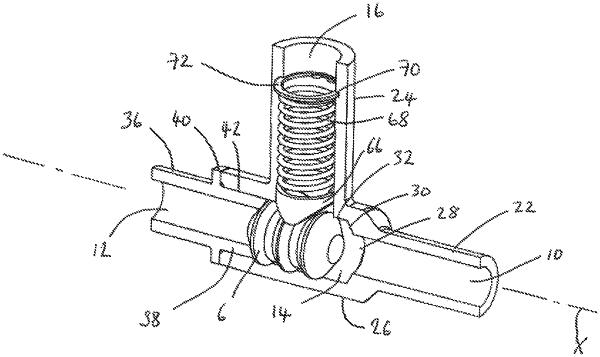| CPC F16K 15/021 (2013.01) [F16K 11/044 (2013.01); F15B 13/028 (2013.01); Y10T 137/2569 (2015.04)] | 13 Claims |

|
1. A shuttle valve comprising
a valve body, a valve member, and a catch;
the valve body comprises a first and a second fluid inlet, a central chamber, and a fluid outlet,
the first and second fluid inlets and the fluid outlet open into the central chamber via a first and a second inlet mouth and an outlet mouth;
the valve member is configured to move between a first and a second position; in which the valve member closes the first inlet mouth and allows fluid communication between the second inlet mouth and the outlet mouth when the valve member is in the first position;
the valve member closes the second inlet mouth and allows fluid communication between the first inlet mouth and the outlet mouth when the valve member is in the second position;
the catch exerts a biasing force against the valve member;
the valve member and catch are so configured that the catch biasing force biases the valve member to close the first inlet mouth when the valve member is in the first position and to close the second inlet mouth when the valve member is in the second position;
the catch comprises a biasing means and a pressure ring, and the catch is configured to bias the pressure ring against the valve member; and
the catch further comprises an internal circlip, the internal circlip and the biasing means are located within the outlet, the biasing means is between the pressure ring and the internal circlip, and the catch is so configured that a portion of the pressure ring extends out of the outlet mouth into the central chamber when the biasing means is in an unenergized condition.
|